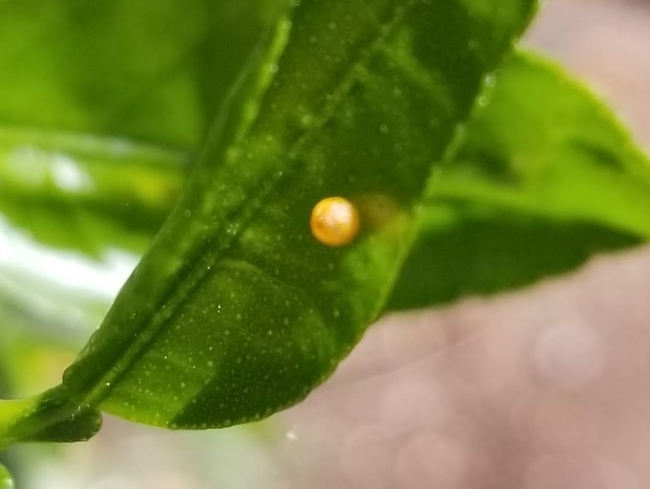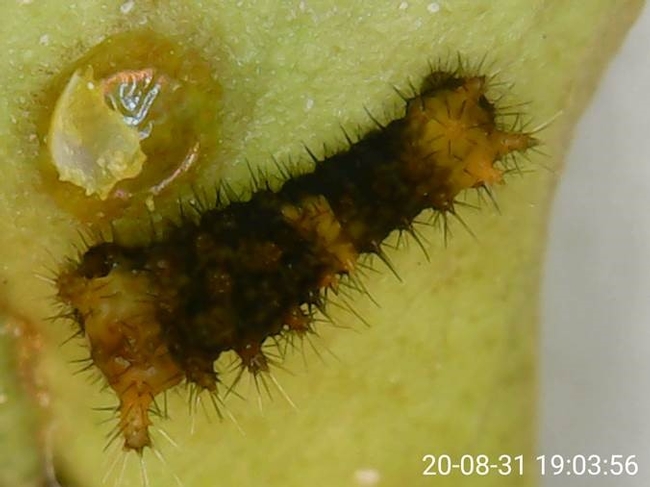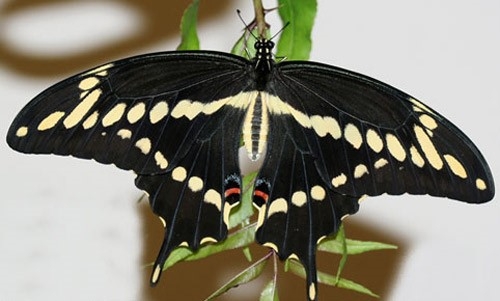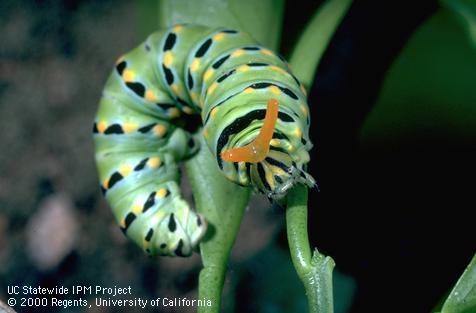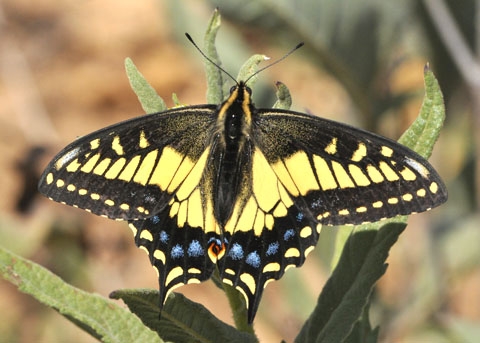I recently got a request for the id of an insect egg from a Santa Barbara PCA. I didnt have a clue, so sent it on to David Haviland, a CE entomolgy advisor in Kern Co. Below is the inquiry and responses from the PCA and David:
Hello Ben,
I've noticed a small orange orb on citrus leaves while examining them for other pests (leafminer in one photo) and wonder if you have any idea what they are?
They aren't totally wide spread but wondering if you could give me a clue.
All the best,
John
John
Interesting since it's a solitary egg. Maybe a spider egg? Lets see what a real entomologist says, David, Monique?
Ben
And the response from Haviland:
John.
There are lots of predators that love to eat eggs, just as there are lots of parasitoids that love to parasitize them. For that reason, most insects only stay in the egg stage for a few days. This is especially true for insects that lay their eggs out in the open (as opposed to somewhere protected inside a leaf). My guess is that if you stick the leaf in a small plastic container in the office that something will come out in a few days. As eggs develop and get close to hatching, it is common for them to start getting darker in color, and oftentimes you can start seeing eyespots, mandibles, or other sclerotized parts of what's inside before it actually hatches.
Good luck with your science experiment.
David
And from John:
David, Ben and all that took a look at my orange insect egg,
Thanks for your input! Below are photos of what emerged which looks like some type of caterpillar to me. Please let me know what you think it could be.
And from Haviland:
Excellent job John. Get yourself a cigar because you are now the proud father of a first-instar giant swallowtail. This is a very large, and one of the most beautiful swallowtails in southern California. The eggs laid right now will become adults next summer.
There is dueling nomenclature on this species, with some considering giant swallowtails across the US to be one species (Papilio cresphontes), with another group believing that giant swallowtails in the east and west are different, with the ones in the west named Heraclides rumiko. Below are profiles of giant swallowtails from the best-known butterfly sites. The first link shows what the caterpillar will look like as it grows. The second link shows its host range. The third has lots of pictures of adults. Great find. –David
http://www.raisingbutterflies.org/giant-swallowtail/
https://www.butterfliesandmoths.org/species/Papilio-cresphontes
https://www.butterfliesofamerica.com/L/heraclides_rumiko.htm
Adult giant swallowtail, Papilio cresphontes Cramer, dorsal view. Photograph by Donald Hall, Entomology and Nematology Department, University of Florida
There are many butterfly species that visit citrus orchards, especially during bloom and when flowering cover crops are present. One of these species, the anise swallowtail, commonly uses citrus trees on the central coast as a host.
California orangedog or Anise swallowtail larvae
Anise swallowtail adult. Santiago Truck Trail, Orange County, CA. 4/25/09. © Peter J. Bryant
However, on some occasions, especially in southern California, there is a second swallowtail species that also uses citrus as a host - the giant swallowtail.
